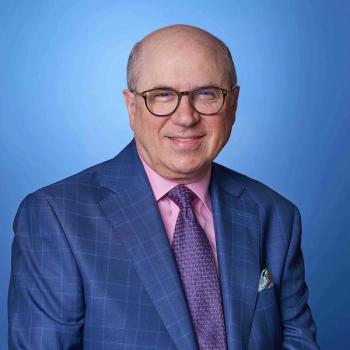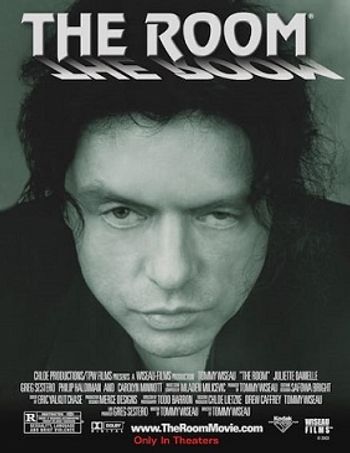
Bridging the Gap Between Psychiatry and the Ministry: One Small Step
“Recently, I had the opportunity to teach seminary students on the subject of mental health and its interface with spirituality and religion.”
FROM THE GROUP FOR THE ADVANCEMENT OF PSYCHIATRY: COMMITTEE ON RELIGION AND PSYCHIATRY
Recently, I had the opportunity to teach seminary students on the subject of mental health and its interface with spirituality and religion. My students were mostly postgraduate students working towards a Master of Divinity Degree (MDiv) at the Union Theological Seminary of New York City (UTS).
The MDiv is the first professional degree of the pastoral profession in North America. I had planned to pursue a Master of Divinity Degree at UTS but deferred it in order to continue with my teaching at SUNY Downstate’s College of Medicine. The then-chair of the department of psychology and religion (now Dean of UTS) met with me and invited me to teach this new course.
Joint Commission recommendations
More than a half century ago, The Joint Commission on Mental Illness and Health recognized the importance of clergy in the provision of mental health services.1 As the Commission noted, “Many individuals with [mental or emotional problems] turn for help to more organized groups and institutions within local communities such as churches and synagogues.”2 The Commission believes that this is one of the most significant frontiers in mental health at all levels of care and recommends that a a major effort needs to be developed in the area of personal and community supports that will:
• Recognize and strengthen the natural networks to which people belong and on which they depend
• Identify the potential social support that formal institutions within communities can provide
• Improve the links between community support networks and formal mental health services
• Initiate research to increase our knowledge of informal and formal community support systems and networks.
Clergy see those seeking mental health counseling
According to the National Alliance on Mental Illness (NAMI) and Substance Abuse and Mental Health Services Administration (SAMSHA), in 2018, over 19% of the US population experienced mental illness; only 43% received mental health treatment.2 Survey data reveal that when people experience significant distress, 40% go to a clergy person first with the average minister spending approximately 10% to 46% of time providing counseling.3 Thus there is a need for collaboration between psychiatrists and clergy. This was the rationale for the new course I was asked to teach by the Dean.
The course was offered as a two-credit “intensive” course, and intensive it was! The entire course was condensed into five all-day classes consisting of a morning seminar and an afternoon seminar. Students were provided the readings several weeks in advance, so that they could participate fully from the outset.
A single textbook by
A role for peer counselors
The goal of clergy and psychiatrists working together to better serve those in need of mental health services was facilitated by adding peer counselors to the curriculum. Peer counselors are often psychiatric patients in recovery who currently work in mental health centers as advocates and support other psychiatric patients. Their lived experience is an important and useful adjunct to the treatment team’s approach to a patient.
I consider peers to be “translators” who assist in conveying the treatment team’s recommendations to a patient in trusted and understandable language as well as communicating the needs of the patient back to the team. Peers have been critical to reducing inpatient and emergency department violence, increasing treatment adherence, and improving health literacy, both mental and general.
In my previous position at Kings County Hospital’s Behavioral Health Center we utilized peers in all areas of patient care, from acute episodes to outpatient services with great success. Truly a win-win, the use of peer counselors provides employment and a career ladder for patients in recovery, while practicing the wellness model that we preach to our patients and staff.
Two peer counselors were part of the seminary course one afternoon during an “ask the experts” session. During the session, the students had an opportunity to participate in a discussion about the peers’ lives, their illness, and experiences with the mental health system (positives and negatives) as well as the role of faith and religion in their lives and recovery.
Following the introduction by the peers, the class divided in two and the students interviewed each peer. The peers then gave critical feedback about the students’ performance and the format was repeated with the other peer. The students agreed that meeting and conducting a practice interview with a person with lived experience of illness and treatment was overwhelmingly positive. One student wrote, “The role play with the special guests [was] superb. The [Ask the Expert] session helped all the course participants gain confidence in their counseling skills.”
When I later debriefed with the peers they told me that they also got tremendous satisfaction from the encounter with the students and were grateful that they could contribute to the seminarians’ training and their careers of helping others; one noted:
As a mental health provider and faith leader it was my utmost pleasure to share my experience of faith and experiences both personal and in the field, with the graduate students. Wherever their career will lead them, hopefully they will be able to utilize their faith and clinical skills in a holistic approach to mental health. It is imperative that faith leaders are confident in their skills when confronting barriers to open discussion, amongst all groups.
At the crossroads where, mental health and religion meet, there is often confusion, misinformation, hesitation and a lack of support. In this decade let us strive to bridge the gap between science and faith to better support the individuals in our care.
The other commented that,
Our society stigmatizes mental illness, which makes [those of us with mental illness afraid to speak. The seminarians were welcoming and accepting and allowed us to tell our stories. hey gave me a platform to say whatever I wanted to say. They gave me a voice even if I was disjointed; they listened and understood my point. I could tell by their insightful questions. In our role play [exercise] I played a person in crisis. To play the person in crisis I had to go back to how I felt before my diagnosis. I had all these bad feelings that I couldn’t control, that I wasn’t the person I wanted to be.
I realized that this is not my current reality. I’m surrounded by supportive people and feelings have less control of my life. The seminarians provided support that day. I’m glad the seminarians are now a part of the recovery community. I felt like I consolidated my recovery journey that day, and that my voice has been restored, even in spaces that [were] less safe [before].
Positive outcomes
Since this was the first time this course was offered at the seminary, a pre- and post-questionnaire was used to see what, if any, insights could be learned from this inaugural course. While the findings are by no means statistically significant, they did suggest some interesting findings. Given that these were seminary students who were pursuing a MDiv degree, it was surprising to me that two students identified as atheists and one as agnostic. The rest were either spiritual or religious. About half prayed or meditated more or less regularly and about half had direct experiences of a sacred being or supreme reality. The post-course questionnaire suggested that students:
• Were more aware of resources related to faith traditions, pastoral care, and chaplaincy as pertains to mental health care
• Were more familiar with a range of mental health literature on religious, spiritual, and worldview beliefs
• Felt adequately prepared for ministry to people with mental health challenges
• Understood the ethical and boundary issues related to spiritual counseling.
Given that the scope of the course could only minimally address the gap between the medical and theological professions, the educational experience was a success with several students recommending that the course become a requirement for all seminarians. Such a recommendation validates the earlier conclusions by the Joint Commission on Mental Health and Illness a half century ago and recent findings by NAMI and SAMHSA: the fields of medicine and theology are inextricably linked.
A course similar to this one can be offered by many psychiatrists who have an interest, if not necessarily any expertise, in this area. If you are interested in teaching a similar course, reach out to the theology departments of your university to help you make introductions to local seminaries. Additional resources include: the
.
The experience of putting this course together and teaching it was for me, and for our peer experts, and the graduate students most positive. I pray it will be for you as well.
Disclosures:
Dr Merlino is Professor of Psychiatry, Downstate College of Medicine, and Adjunct Professor, Union Theological Seminary of New York City. He reports no conflicts of interest concerning the subject matter of this article.
Acknowledgement-the Members of the Group for the Advancement of Psychiatry, Committee on Psychiatry and Religion are Michael Norko, MD, MAR, Chair, Brian A. Fallon, MD, Fayez El-Gabalawi, MD, Jenifer Nields, MD, James Phillips, MD, Salman Majeed, MD, and David Saunders, MD, PhD.
References:
1. Larson DB, Hohmann AA, Kessler LG, et al.
2. Report to the President from the President’s Commission on Mental Health. Recommendations: Community Supports, Vol 1. Washington, DC, US Government Printing Office; 1978: 14-15.
3. Key Substance Use and Mental Health Indicators in the United States: Results from the 2018 National Survey on Drug Use and Health. Substance Abuse and Mental Health Services Administration; August 2019.
4. Johnson WB, Johnson WL.
For Additional Reading
Merlino JP, Omi J, Bowen J, Eds. Lean Behavioral Health: The Kings County Story. Oxford, UK: Oxford University Press; 2014.
Newsletter
Receive trusted psychiatric news, expert analysis, and clinical insights — subscribe today to support your practice and your patients.













